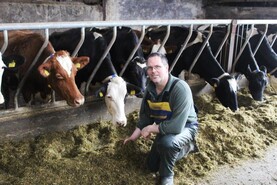New Zealand’s national dairy herd will not increase in the future, the country’s head of water and land science has said.
Speaking on a Teagasc Signpost webinar, chief scientist for land and water in New Zealand Professor Richard McDowell said he does not envision that the number of dairy cows in the country will grow in the future.
“I think we had ‘peak cow’, as some folk call it, around 2017/2018. It [the national dairy herd] has slightly decreased now. You might see an increase in some herd sizes for efficiency reasons,” he said.
Figures from DairyNZ put the average dairy herd size in the country at 449 cows.
According to Statistics NZ - the equivalent of Ireland’s Central Statistics Office - the total dairy cattle (including bulls and heifers) in the country was 6.14m in June 2023, 6% down on 6.53m in June 2017.
Land use
McDowell, who is currently on a study trip in Ireland, spoke about land use change to water quality.
Responding to a question from Teagasc’s Noel Meehan on the economic and social implications of taking land out of dairying, McDowell said advice, consistent implementation of regulation and subsidies can be used to encourage land use change.
“We don’t have subsidies - I’ll put that out there. In the 1980s, we went from the most subsidised to the least subsidised agricultural country in the world and we’ve maintained that ever since.
“The only real incentives we have actually come from the processors - you are starting to see that, although it is only the green shoots.
“Those companies like Fonterra, and other dairy companies, that are having differential pricing associated with compliance and/or leadership and environmental performance,” he said.






 This is a subscriber-only article
This is a subscriber-only article










SHARING OPTIONS: